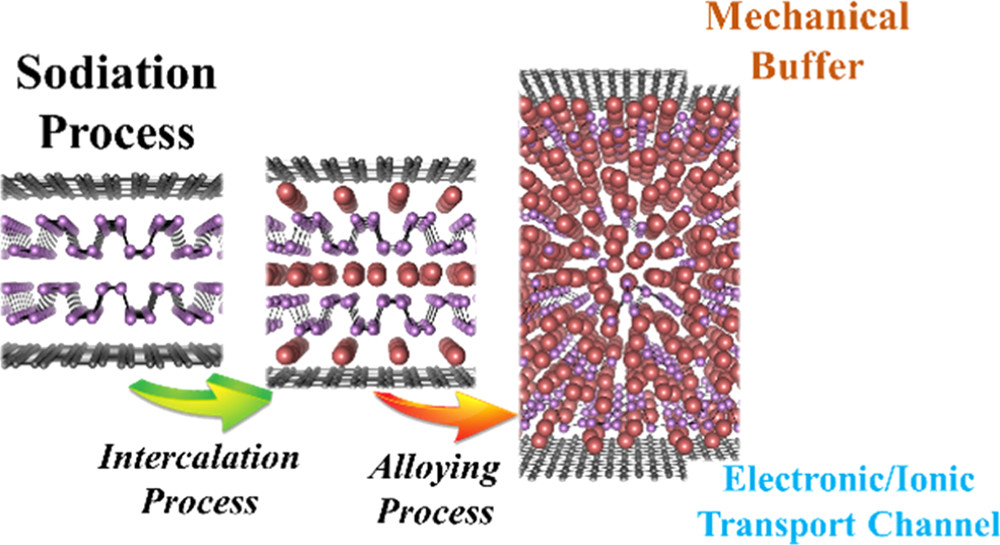Atomisitic Sodiation Mechanism of Phosphorene-Graphene Heterostructure for Sodium-Ion Batteries Determined by First-Principles Calculations
슈퍼관리자
2021-05-21
Atomisitic Sodiation Mechanism of Phosphorene-Graphene Heterostructure for Sodium-Ion Batteries Determined by First-Principles Calculations
-
Authors :
H. W. Lee, H. Jung, B. C. Yeo, D. Kim, and S. S. Han
-
Journal :
Journal of Physical Chemistry C
-
Vol :
122
-
Page :
20653-20660
-
Year :
2018

Abstract
Black phosphorus has recently attracted significant attention as an anode material for sodium-ion batteries (SIBs); however, the material suffers from a severe volume change during charge/discharge processes, leading to poor cycle life. To overcome this drawback of black phosphorus, a phosphorene/graphene (P/G) heterostructure was recently proposed, but no atomistic understanding of the sodiation mechanism has yet been reported. In this work, we report an atomistic mechanism for the sodiation of the P/G hybrid material based on first-principles calculations. The layered structure of P/G is maintained up to the composition of Na0.25P/G, which can be referred to as an intercalation process; however, above that composition, further sodiation leads to the dissociation of P−P bonds and the formation of an amorphous NaxP/G structure where the graphene layers are not broken and no Na atoms intercalate into the spaces between two graphene layers, which is referred to as an alloying process. According to our first-principles calculation, the graphene layers in the P/G material provide a buffer layer to accommodate the volume expansion of the material during sodiation (30% lower than that in the case of black phosphoros) without sacrificing the specific capacity. On the basis of calculations of carrier effective masses based on the band structures calculated by a hybrid density functional theory at the HSE06 level, the P/G material exhibits electrical conductivity superior to that of black phosphorus, in which graphene layers in the P/G can provide an electrical conducting channel even at a high sodiation level because the graphene layers are maintained up to full sodiation. Moreover, first-principles molecular dynamics simulations demonstrate that graphene layers in the P/G provide facile diffusion channels for Na atoms in highly sodiated NaxP/G, although the effect is not significant during the intercalation process. On the basis of these results, we can expect that the P/G heterostructure has superior cycling properties and high rate capabilities and that the P/G hybrid material can indeed be a promising material for the anode of practical SIBs.















